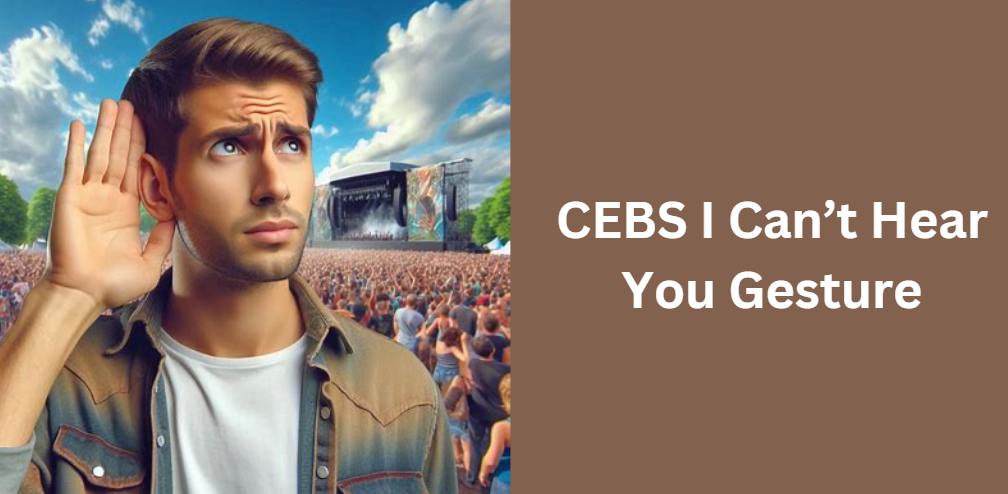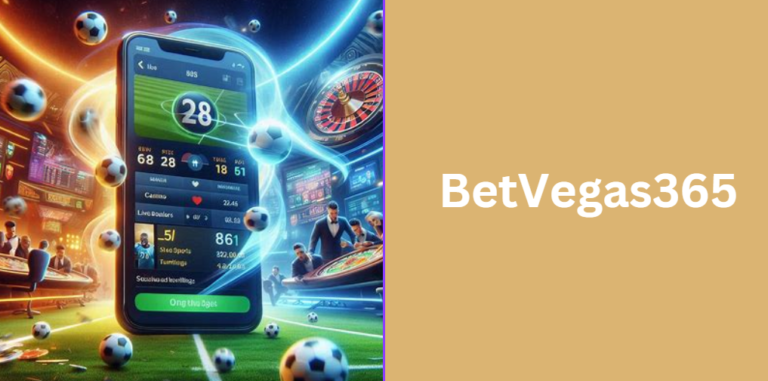CEBS I Can’t Hear You Gesture – Meaning, Origin, and How to Use It
Communication isn’t just about words; gestures play a crucial role in conveying messages without speech. One such widely recognized expression is the CEBS I Can’t Hear You Gesture. This hand movement is used to indicate that someone cannot hear or understand what is being said.
In this guide, we’ll dive deep into the CEBS I Can’t Hear You Gesture, covering its meaning, origin, cultural significance, and practical usage. Whether you’ve seen it used in sports, social media, or daily conversations, this article will help you fully understand its context and importance.
What is the CEBS I Can’t Hear You Gesture?
The CEBS I Can’t Hear You Gesture is a non-verbal sign used to indicate difficulty in hearing. It generally involves raising a hand to the ear while slightly tilting the head forward or making a questioning facial expression. Some variations include cupping the ear or shaking the head.
Key Features of the Gesture:
- Hand Placement: Usually one or both hands near the ears.
- Facial Expression: A confused or questioning look.
- Body Language: Sometimes includes leaning forward to indicate difficulty hearing.
This gesture is commonly used in loud environments, public speaking, performances, and everyday conversations when someone wants the speaker to repeat themselves or speak louder.
Origin & History of the CEBS I Can’t Hear You Gesture
Historical Background
The CEBS I Can’t Hear You Gesture has been used for centuries in different cultures as a way to indicate hearing difficulties. Some early depictions of this gesture can be found in Greek and Roman theater, where actors exaggerated their actions to communicate emotions and responses without spoken words.
Evolution in Popular Culture
- Military and Aviation: Pilots and soldiers have used variations of this gesture in high-noise environments to signal communication issues.
- Sports and Entertainment: Athletes and performers often use it to interact with crowds, encouraging cheers or acknowledging audience responses.
- Deaf and Hard-of-Hearing Community: This gesture is sometimes confused with American Sign Language (ASL) signs related to hearing impairment, though they have distinct meanings.
The Role of CEBS in the CEBS I Can’t Hear You Gesture
CEBS (which could refer to an organization, term, or cultural reference) has played a role in popularizing the CEBS I Can’t Hear You Gesture. Whether it originated from a sports event, a viral trend, or a community movement, its significance has grown over time.
Some possible associations include:
| Aspect | Connection to CEBS |
|---|---|
| Social Media Influence | Viral videos and memes featuring the gesture |
| Professional Communication | Used in workplaces and conferences |
| Sign Language Awareness | Relation to ASL and other non-verbal cues |
Understanding how CEBS connects with this gesture helps us appreciate its broader cultural relevance.
How the Gesture is Used in Different Contexts
Everyday Conversations
People often use the CEBS I Can’t Hear You Gesture in noisy places like concerts, parties, and busy streets. It serves as a universal sign to request someone to speak louder.
Social Media & Memes
With the rise of TikTok, Instagram, and YouTube, gestures like this one have gained popularity. Influencers and comedians use it humorously to emphasize misunderstanding or create engaging content.
Workplace & Professional Settings
In meetings and conferences, professionals may use this gesture when struggling to hear a speaker or when a microphone isn’t working correctly. It signals the need for better audio clarity.
Sports & Entertainment
Athletes frequently use the CEBS I Can’t Hear You Gesture to hype up crowds. For example, a basketball player might use it after making a significant play to encourage louder cheers.
Psychological & Social Impact of the Gesture
Non-verbal communication is crucial for human interaction, and the CEBS I Can’t Hear You Gesture plays a role in expressing emotions and needs without words.
Why Do People Use This Gesture?
- Expressing Confusion – Helps show when something isn’t understood.
- Encouraging Engagement – Used by performers and public speakers to boost audience participation.
- Non-Verbal Cue in Noisy Places – Indicates the need for clearer communication.
Using gestures effectively enhances social interactions, workplace efficiency, and public communication.
Comparison with Sign Language and Other Gestures
Is It Similar to ASL?
Although the CEBS I Can’t Hear You Gesture resembles some signs in ASL, it is not an official sign language gesture. Instead, ASL uses specific hand signs and facial expressions to communicate hearing-related messages accurately.
Other Similar Gestures Around the World
| Gesture | Meaning | Region |
|---|---|---|
| Cupping Ear | “I can’t hear you” | Universal |
| Tapping Ear | “Listen carefully” | Various Cultures |
| Pointing to Ear | “Pay attention to sound” | European Countries |
Knowing these differences helps avoid miscommunication in international settings.
How to Use the CEBS I Can’t Hear You Gesture Correctly
To use the CEBS I Can’t Hear You Gesture appropriately, follow these steps:
- Raise your hand near your ear.
- Slightly tilt your head forward to show difficulty in hearing.
- Make a questioning facial expression to reinforce the message.
- Hold the gesture momentarily, allowing the other person to respond.
- Use it only when necessary and avoid overuse in professional settings.
Understanding proper usage prevents misinterpretations and ensures clear communication.
Future of Non-Verbal Communication & This Gesture
As communication evolves, non-verbal cues like the CEBS I Can’t Hear You Gesture remain important. With advancements in technology, virtual reality (VR), and artificial intelligence (AI), gestures could become integral to digital interactions.
Emerging trends include:
- AI interpreting gestures for accessibility in virtual meetings.
- Gesture-based commands in AR/VR experiences.
- Integration of non-verbal communication tools in video calls.
While spoken language dominates, gestures will always be a powerful form of human expression.
Frequently Asked Questions (FAQs)
Can the “I Can’t Hear You” gesture be misunderstood?
Yes, like any gesture, it can be misinterpreted depending on the context or cultural background. For instance, in some cultures, gestures near the ear might indicate something entirely different, such as a request for privacy or signal for quiet. It’s important to consider the situation before using the gesture.
Is the “I Can’t Hear You” gesture effective in large groups or noisy environments?
Absolutely! This gesture is often used in crowded or noisy spaces like concerts, sports events, or even busy streets to indicate difficulty hearing. It serves as a clear, visual signal to ask for louder speech or clarification, helping to avoid miscommunication.
Are there any famous examples of celebrities using the gesture?
Yes, many athletes and performers use this gesture to engage with their audience. For example, musicians might use it to encourage louder cheers from their fans during live performances. Similarly, famous athletes on the field sometimes use the gesture to hype up the crowd after a significant play.
Does the CEBS “I Can’t Hear You” gesture vary by region?
While the basic hand movement remains similar worldwide, the interpretation of gestures can vary by region. Some countries may have their own specific variations of this gesture or additional gestures to signal similar meanings, so it’s crucial to be aware of local customs.
Is there any connection between the gesture and modern digital communication?
As digital communication grows, non-verbal cues like the CEBS I Can’t Hear You Gesture are increasingly integrated into virtual settings. With the rise of video conferencing, people may use similar gestures to express difficulty hearing or to indicate the need for better audio clarity during online meetings.
Conclusion
The CEBS I Can’t Hear You Gesture is a universal non-verbal expression used to indicate hearing difficulty or engage an audience. It has historical significance, is widely used in social interactions, sports, and entertainment, and continues to evolve in the digital age.
Understanding its proper use, cultural impact, and connection to CEBS ensures effective communication. Whether in daily conversations or professional settings, this gesture remains a powerful tool for non-verbal expression.
Would you like to share your thoughts on this gesture? Leave a comment or discuss it on social media!
Read more posts like
Mia Bieniemy: The Untold Story of Eric Bieniemy’s Wife and Their Inspiring Life Together
Number Avstarnews: The Ultimate Guide to Everything You Need to Know
Alpha Size L Men’s COOGI Longreef Zip Hoody – A Complete Guide
Comprehensive Guide to 1-917-453-9371: Origins, Uses, and Verification
BlueCare All Copay 16253 w/OON Explained – The Ultimate Guide






